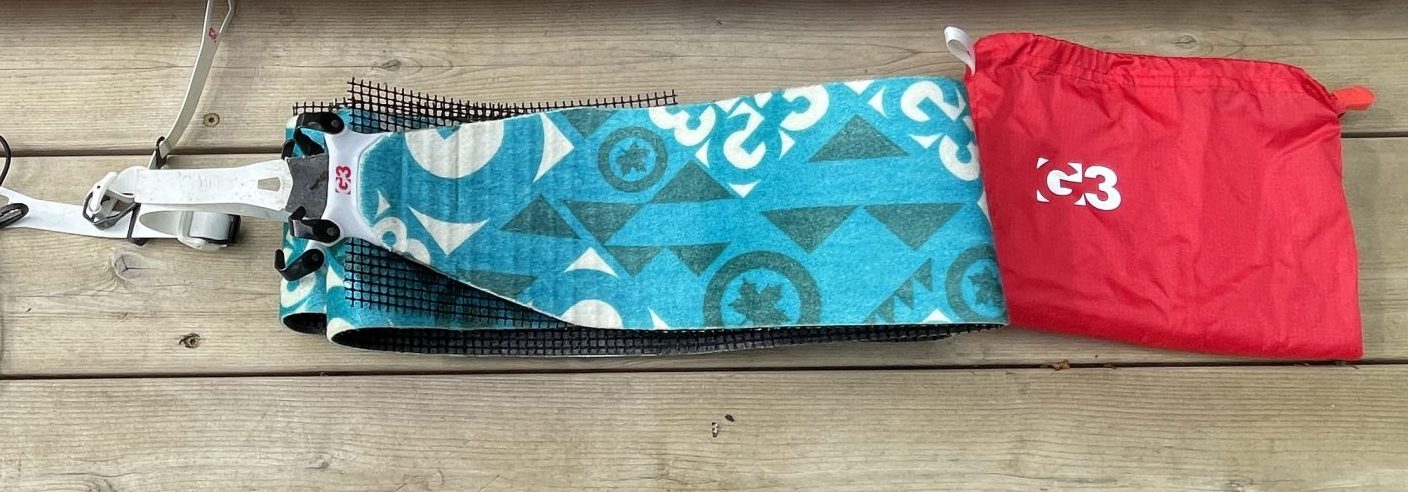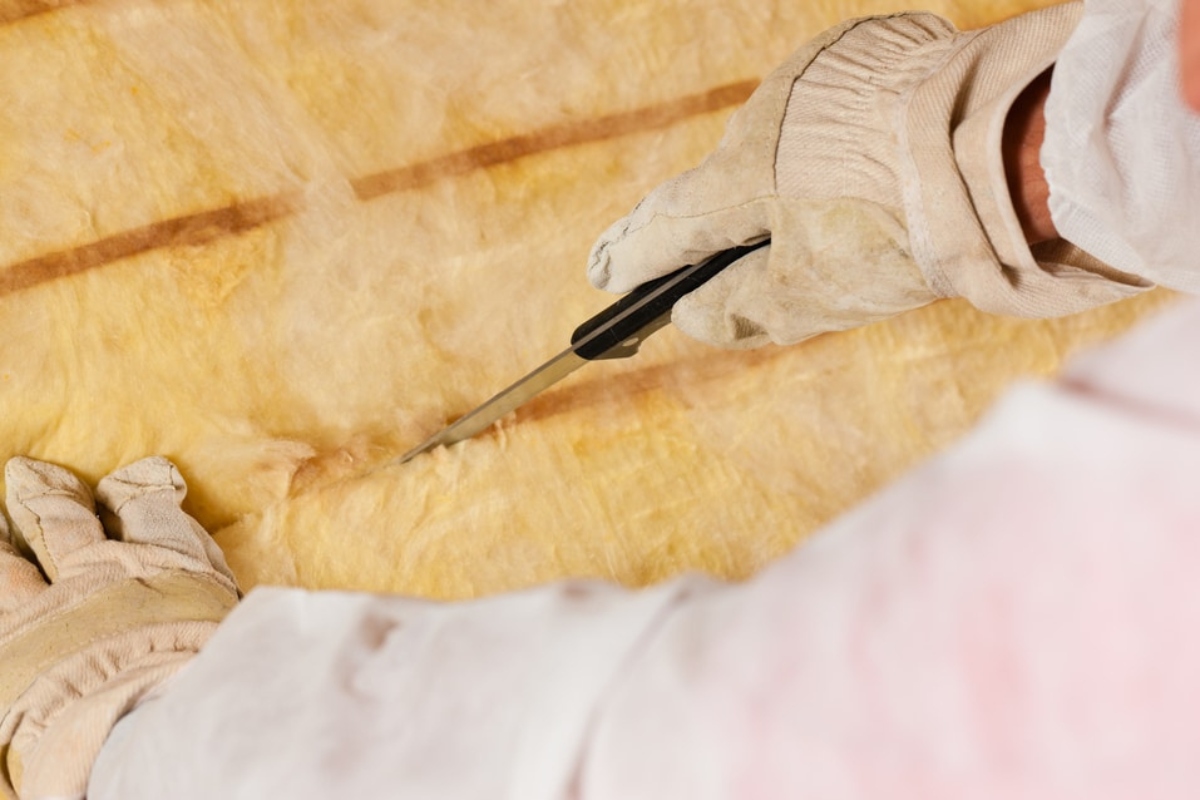

Articles
How To Store Ski Skins
Modified: January 18, 2024
Learn the best way to store ski skins and keep them in optimal condition with our informative articles.
(Many of the links in this article redirect to a specific reviewed product. Your purchase of these products through affiliate links helps to generate commission for Storables.com, at no extra cost. Learn more)
Introduction
When it comes to skiing, having the right equipment is essential for a great experience on the slopes. Among the key pieces of gear are ski skins. These specialized strips of material are designed to be attached to the bottom of skis, providing extra grip and traction on uphill slopes. But what do you do with your ski skins when you’re not using them?
Storing ski skins properly is crucial to maintain their performance, durability, and lifespan. In this article, we’ll guide you through the process of storing ski skins correctly, so you can keep them in optimal condition for many seasons to come.
Before we dive into the details of storage, it’s important to understand the importance of choosing the right storage options. Ski skins can be sensitive to temperature, moisture, and other environmental factors. Therefore, their storage should be carefully planned to avoid any potential damage or deterioration.
Next, we’ll discuss the different storage options and their pros and cons. Each option has its own set of considerations, so you’ll want to choose the one that best suits your needs and the conditions in which you’ll be storing your skins.
Once you’ve chosen the right storage method, it’s crucial to clean your ski skins thoroughly before storing them. Ski skins can accumulate dirt, debris, and even wax residue during use. Cleaning them properly will remove any contaminants and ensure that they are ready for use when you hit the slopes again.
After cleaning, it’s important to dry the skins properly before storage. Moisture can lead to the growth of mold or mildew, which can damage the adhesive and impact the performance of the skins. We’ll share some tips on how to dry your ski skins effectively so that they’ll be ready and waiting for your next adventure.
When storing ski skins, it’s essential to keep them separate to avoid any adhesive transfer or damage. We’ll explain how to separate your skins and provide some recommendations on protective sleeves or bags that can help keep them in optimal condition.
Folding the ski skins correctly is another crucial step in proper storage. We’ll outline the recommended folding techniques to prevent any creases or damage to the skins.
Lastly, we’ll discuss some maintenance tips to keep your ski skins in excellent condition during storage and in between ski trips. These tips will help prolong the lifespan of your skins and ensure that they continue to deliver optimal performance.
By following these guidelines and implementing proper storage practices, you can ensure that your ski skins remain in top-notch condition, ready to help you ascend the mountains and enjoy your skiing adventures to the fullest.
Key Takeaways:
- Properly storing ski skins is crucial for maintaining their performance and lifespan. Choosing the right storage method, cleaning techniques, and maintenance tips will ensure your ski skins are always ready for your next adventure.
- From choosing the right storage options to folding and storing the skins properly, following these guidelines will help maximize the lifespan of your ski skins and ensure they provide the grip and traction you need on the slopes.
Read more: How To Store Skis
Choosing the Right Storage Options
When it comes to storing ski skins, it is important to consider the environmental factors that can impact their condition. Proper storage options can help protect the skins from temperature variations, moisture, and other potential damages. Here are some key storage options to consider:
- Dry Storage Bag: A dry storage bag made specifically for ski skins is an ideal option. These bags are designed to keep moisture out and provide a protective barrier for your skins. Look for bags that are breathable and have a waterproof or water-resistant exterior. These bags are lightweight and compact, making them easy to carry and store your ski skins.
- Plastic Ziplock Bags: If you’re looking for a budget-friendly option, plastic ziplock bags can work well to store your ski skins. Make sure to choose bags that are large enough to hold your skins without folding them excessively. Avoid using regular sandwich bags as they may not provide sufficient protection against moisture.
- Skin-Savers: Skin-savers are protective fabric covers that are specifically designed to slide onto the adhesive side of your ski skins. They provide an added layer of protection against dust, dirt, and moisture. Skin-savers are a great option if you prefer the convenience of quickly covering and storing your skins without the need for additional bags or containers.
- Cardboard Tubes: If you’re looking for a DIY storage option, cardboard tubes can be a practical and cost-effective solution. Find a tube that is long and wide enough to fit your ski skins without excessive folding. Wrap the skins around the tube, ensuring that they are straight and not twisted. This option is particularly useful if you have limited storage space.
When choosing a storage option, it is important to consider the length of your skins. If your skins are longer than the storage container, you may need to fold them, which could lead to creases or damage over time. Additionally, always ensure that your chosen storage option allows for proper ventilation to prevent moisture buildup.
Pro tip: Label your storage containers or bags with the date of the last waxing or any other relevant information. This will help you keep track of when your skins were last serviced, ensuring they are ready for optimal performance when you need them.
Remember, the goal is to keep your ski skins in a controlled environment that is dry, dust-free, and free from extreme temperature fluctuations. By selecting the right storage option, you can ensure that your ski skins remain in excellent condition, ready for your next adventure on the slopes.
Cleaning Your Ski Skins
Regular cleaning of your ski skins is essential to remove any dirt, debris, or wax residue that may have accumulated during use. Cleaning them properly will not only help maintain their performance but also prolong their lifespan. Here’s a step-by-step guide on how to clean your ski skins:
- Remove from Skis: Start by removing the ski skins from your skis. Carefully peel them off starting from one end, making sure not to fold or twist them excessively.
- Brush Off Excess Snow and Debris: Use a ski-specific skin brush or a soft-bristle brush to gently remove any snow, ice, or debris from the skins. Be thorough but gentle to avoid damaging the fibers or adhesive.
- Spot Clean with Water: If you notice any stubborn dirt or residue on your skins, spot clean those areas with a damp cloth or sponge using lukewarm water. Avoid using any harsh chemicals or abrasive cleaners, as they can damage the skins.
- Avoid Heat: It is important to never expose your ski skins to direct heat sources, such as heaters or hair dryers. High heat can damage the adhesive and impact the performance of the skins.
- Allow to Air Dry: After spot cleaning, let your ski skins air dry completely before storing them. Find a clean, dry area with good airflow, away from direct sunlight or heat sources. Avoid folding or stacking the skins until they are completely dry to prevent moisture buildup.
It’s worth noting that if your ski skins have excessive wax buildup, it is recommended to use a specialized ski skin cleaner. These cleaners are designed to remove wax residues without damaging the skins. Follow the manufacturer’s instructions when using these products, and always ensure proper ventilation during the cleaning process.
Pro tip: If you regularly encounter wet or icy conditions while skiing, applying a fluorinated ski skin spray can help repel water and reduce snow build-up on your skins. This can make cleaning them easier and improve their performance in wet conditions. However, always check the manufacturer’s recommendations to ensure compatibility with your specific ski skins.
By cleaning your ski skins after each use, you’ll not only maintain their performance but also extend their lifespan. Clean skins provide better grip and traction, ensuring a safe and enjoyable skiing experience every time.
Drying the Skins Properly
After cleaning your ski skins, it’s crucial to dry them properly before storing them. Moisture can lead to the growth of mold or mildew, which can damage the adhesive and affect the performance of the skins. Follow these steps to ensure your ski skins are adequately dried:
- Pat Dry with Towels: Start by gently patting the skins dry with a clean, absorbent towel. Press the towel against the skin’s surface to absorb any excess moisture. Avoid rubbing or scrubbing, as this can damage the fibers or adhesive.
- Air Dry: Once you’ve removed as much moisture as possible with towels, allow the ski skins to air dry in a well-ventilated area. Find a clean and dry space where the skins can lay flat or hang vertically, ensuring that they are not folded or stacked. Consider using a drying rack or hanging them on a clothesline using clips or hangers.
- Ensure Proper Airflow: Proper airflow is crucial for effective drying. Avoid placing the skins near heat sources or in direct sunlight, as this can cause excessive drying and potential damage. Instead, choose a cool, dry area with good air circulation.
- Open Up the Skins: While the skins are drying, open them up and straighten them to ensure proper airflow and prevent any moisture from getting trapped within folds or creases. This will help expedite the drying process and minimize the risk of mold or mildew formation.
- Allow Ample Drying Time: The drying time will vary depending on the humidity level and overall moisture content. Allow the ski skins to air dry completely, which may take several hours or even overnight. Ensure that both sides of the skins are thoroughly dry before proceeding to the next step.
Pro tip: If you’re in a rush or need to store your ski skins quickly, you can use a low heat setting on a hairdryer to speed up the drying process. However, keep the dryer at a safe distance from the skins and use a gentle airflow to avoid overheating or damaging the adhesive.
By ensuring that your ski skins are completely dry before storage, you’ll protect them from moisture-related issues and maintain their performance for future use. Proper drying will help extend the lifespan of your skins and ensure that they are ready for optimal performance when you hit the slopes.
When storing ski skins, make sure they are completely dry before folding them adhesive side to adhesive side. Store them in a cool, dry place away from direct sunlight to prolong their lifespan.
Separating the Skins
When it comes to storing ski skins, it’s crucial to keep them separate to prevent any adhesive transfer or damage. Here are some steps to follow when separating your ski skins:
- Gently Remove from Storage: If your ski skins are stored together, start by gently removing them from their storage container or bag. Avoid pulling or tugging on the skins too forcefully, as this can damage the adhesive or cause unnecessary stretching.
- Ensure Clean and Dry Surfaces: Before separating the ski skins, make sure that both the adhesive side and the non-adhesive side of each skin are clean and dry. Any dirt, debris, or moisture on the surfaces can affect the performance of the adhesive or lead to damage over time.
- Peel Apart Slowly: Start peeling the skins apart from one edge, slowly and evenly. Work your way along the length of the skins, applying gentle pressure to separate them. Avoid gripping or pulling on the adhesive surface directly, as this can cause the adhesive to lift or tear.
- Avoid Touching Adhesive Surface: Once the skins are separated, it’s important to avoid touching the adhesive surface with your bare hands. Oils and dirt from your hands can transfer onto the adhesive and impact its effectiveness. If you accidentally touch the adhesive, use a clean lint-free cloth or glove to gently remove any oils or debris.
- Inspect for Damage: Take the time to inspect both sides of each skin for any signs of damage, such as tears, cuts, or excessive wear. If you notice any issues, consider repairing or replacing the damaged skin as necessary. Proper maintenance and regular inspections help ensure the longevity and performance of your ski skins.
Pro tip: If you have multiple sets of ski skins or you often switch between different pairs, consider labeling or marking each set to keep them organized and avoid confusion. You can use a permanent marker or small stickers to indicate the specific skis these skins belong to.
By separating your ski skins carefully and ensuring they are clean, dry, and free from damage, you’ll maintain their performance and prolong their lifespan. Proper handling during this step will help preserve the adhesive and keep your ski skins in top-notch condition for future use.
Read more: How To Store Skis At Home
Folding and Storing the Skins
Properly folding and storing your ski skins is crucial to maintain their performance and prolong their lifespan. Here are some steps to follow when folding and storing your ski skins:
- Clean and Dry: Before folding your ski skins, ensure that both the adhesive side and the non-adhesive side are clean and dry. Any dirt, debris, or moisture on the surfaces can affect the adhesive or lead to damage over time.
- Smooth and Align: Lay the skin with the adhesive side down on a clean, flat surface. Use your hands or a ski-specific skin smoother to gently smooth out any wrinkles or creases on the skin’s surface. This will help ensure that the skins adhere properly when you use them again.
- Folding Technique: Fold your ski skins in a way that minimizes creasing and adhesive contact. One common folding technique is to fold the skin in thirds. Start by folding one end of the skin up towards the middle, making sure to keep the adhesive sides facing each other. Then, fold the other end over to meet the first fold. This will result in a neat, compact package.
- Skin Savers or Plastic Sheets: If you have skin-savers or plastic sheets, place them between the folded surfaces of the ski skins. This additional layer of protection can help prevent adhesive transfer and ensure that the skins stay in optimal condition during storage.
- Storage Container: Choose a suitable storage container or bag that is clean, dry, and large enough to accommodate your folded ski skins without excessive bending or folding. Avoid using small or tight containers that could create unnecessary creases or strain on the skins.
- Avoid Extreme Temperatures: Store your ski skins in a cool, dry place away from extreme temperatures. Avoid exposing them to direct sunlight, heaters, or other heat sources, as high temperatures can damage the adhesive or cause the skins to stick together.
Pro tip: If you’re short on storage space or prefer a more compact option, consider rolling your ski skins instead of folding them. Start with the skin adhesive side down and roll it tightly from one end to the other, just like rolling up a poster. This method can help reduce the overall size of the package and can be a good alternative for certain storage containers or bags.
By following these steps and using proper folding techniques, you’ll ensure that your ski skins are stored in an organized and protected manner. This will help maintain their performance and prolong their lifespan, allowing you to enjoy many more skiing adventures with confidence and ease.
Proper Maintenance Tips
Maintaining your ski skins properly is essential to ensure their longevity and reliable performance. Here are some useful tips to keep your ski skins in excellent condition:
- Regular Inspections: Regularly inspect your ski skins for any signs of wear, damage, or delamination. Check the edges, the adhesive surface, and the overall condition of the skins. If you notice any issues, such as tears, cuts, or separation of layers, consider repairing or replacing the damaged skin.
- Store in Controlled Environment: Always store your ski skins in a controlled environment that is dry, dust-free, and away from extreme temperatures. Moisture, heat, and direct sunlight can all cause damage to the skins, so choose a storage area that provides optimal conditions for their preservation.
- Avoid Contact with Contaminants: Try to avoid contact between the adhesive side of your ski skins and any contaminants, such as dirt, oil, or sunscreen. These substances can affect the adhesive’s effectiveness and bond to the ski base. If necessary, use a gentle ski-specific cleaner to remove any contaminants from the skins.
- Apply Fresh Wax Regularly: Applying a fresh coat of ski wax periodically can help protect the ski skins and enhance their performance. The wax acts as a protective layer, repelling moisture and reducing friction between the skins and the snow. Follow the manufacturer’s recommendations for waxing frequency and appropriate wax types for your specific ski skins.
- Keep Adhesive Clean: Over time, dirt, dust, and debris may accumulate on the adhesive side of your ski skins, affecting their grip and sticking power. Use a ski-specific adhesive cleaner or rubbing alcohol to gently clean the surface of the adhesive. Allow the adhesive to dry completely before folding and storing the skins.
- Avoid Excessive Stretching: When applying and removing your ski skins, avoid excessive stretching or pulling, as this can damage the adhesive and the skin’s fibers. Handle them with care and follow the manufacturer’s instructions for proper attachment and removal techniques.
- Service as Needed: If you notice a decline in the performance or adhesion of your ski skins, it may be time to service them. This can involve refreshing the adhesive, replacing worn-out parts, or even upgrading to a new pair if necessary. Regular maintenance and servicing will help ensure that your ski skins perform optimally and provide a safe and enjoyable experience on the mountain.
By following these maintenance tips and incorporating them into your ski skin care routine, you can help extend their lifespan and ensure that they continue to deliver reliable performance season after season. Taking the time to properly care for your ski skins will contribute to your overall skiing experience and allow you to make the most out of each adventure on the slopes.
Conclusion
Properly storing ski skins is crucial to maintain their performance, durability, and lifespan. By following the right storage options, cleaning techniques, and maintenance tips, you can ensure that your ski skins are always in top-notch condition and ready for your next skiing adventure.
Choosing the right storage method, whether it’s a dry storage bag, plastic ziplock bags, skin-savers, or cardboard tubes, plays a significant role in protecting your skins from environmental factors like temperature and moisture. Keeping them clean and dry before storage helps prevent any dirt, debris, or wax residue from affecting their performance.
When cleaning the ski skins, gentle brushing and spot cleaning with lukewarm water are effective in removing any stubborn dirt or residue. After cleaning, it is crucial to allow the skins to air dry completely before folding and storing them. Avoid heat sources, as they can damage the adhesive.
Separating the ski skins carefully, inspecting for any damage, and keeping them clean and dry are essential steps in proper storage. Folding the skins in a way that minimizes creasing and using skin-savers or plastic sheets for added protection helps maintain their quality.
Proper maintenance tips include regular inspections, storing in a controlled environment, avoiding contact with contaminants, applying fresh wax periodically, keeping the adhesive clean, avoiding excessive stretching, and servicing as needed. These practices will ensure the longevity and reliable performance of your ski skins.
By following these guidelines and incorporating them into your ski skin care routine, you can maximize the lifespan of your ski skins and ensure that they continue to provide the grip and traction you need on the slopes. With properly stored and maintained ski skins, you can focus on enjoying your skiing adventures with confidence and peace of mind.
Frequently Asked Questions about How To Store Ski Skins
Was this page helpful?
At Storables.com, we guarantee accurate and reliable information. Our content, validated by Expert Board Contributors, is crafted following stringent Editorial Policies. We're committed to providing you with well-researched, expert-backed insights for all your informational needs.















0 thoughts on “How To Store Ski Skins”